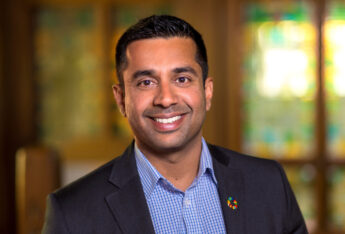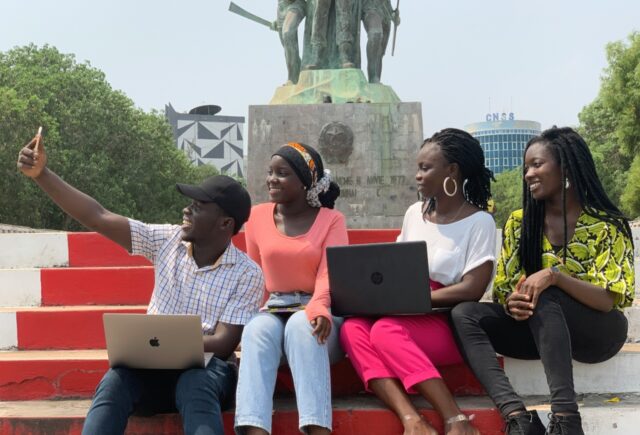The fund aims to help close the estimated annual $280bn climate adaptation gap and benefit 19 million people living in emerging and developing countries, including least developed countries and small island developing states.

GAIA Climate Loan Fund (GAIA), a blended finance platform targeting climate adaptation in developing countries, has reached first close with $600m (€522m) in capital commitments.
Managed by Climate Fund Managers (CFM), a climate-focused blended finance investment manager, the fund is co-founded by its three cornerstone investors – the Green Climate Fund (GCF), FinDev Canada and MUFG Bank (MUFG).
It has secured $150m from the UN’s GCF as a first-loss investor, while FinDev Canada, the Canadian development finance institution, has provided $70m in junior capital and $75m in senior capital, and MUFG, Japan’s largest financial group, has committed $295m in senior capital.
FinDev Canada has also provided additional grant funding for both a foreign exchange facility to enable local currency lending and a technical assistance facility, which will support project preparation, ESG readiness, performance and impact outcomes.
Institutional investment
Amit Mohan, head of private credit at Climate Fund Managers, told Impact Investor that he and his team were in discussions with impact-minded institutional investors, including insurance companies, pension funds and family offices to reach a target fund size of $1.48bn by 2027.

“The focus is on raising additional senior capital, allowing GAIA to unlock additional junior capital raised at first close,” he said.
The fund will provide loans to predominantly climate adaptation projects in 19 of the most climate vulnerable countries in the world – those least equipped to respond to climate change. The investments will take the form of long-term loans to sovereign, sub-sovereign, quasi-sovereign and state-owned entities, including municipalities, development banks and state-owned utilities operating in the targeted markets, which include Barbados, Ghana, India, Jamaica, Mauritius, Mongolia, Morocco, Philippines, and Togo, to name a few.
“GAIA will provide long-term private debt to public entities. This could include governments, ministries, municipalities, state-owned utilities or development banks – any entity that is state-owned or majority state-owned,” said Mohan, adding that the reason for this approach is that climate adaptation initiatives are largely a public good, such as the water, transport or nature sectors.
“GAIA’s model enables these public entities and their projects to gain access to sustainable private finance, and then generate measurable cash flows and impact,” he added.
MUFG serves as origination partner for the fund, and Pollination – a global advisory firm focused on climate and nature – will support operational delivery.
Closing the climate adaptation finance gap
According to the United Nations Environment Programme (UNEP) Adaptation Gap Report 2023, the global adaptation finance gap is estimated to be between $194bn and $366bn annually, putting the median figure at $280bn today. The 2025 report published earlier this week, updates this figure putting the cost of adaptation finance needed in developing countries at $310bn per year in 2035, when based on modelled costs, and $365bn per year, when based on extrapolated needs expressed in Nationally Determined Contributions (NDCs) and National Adaptation Plans (NAPs).
GAIA acknowledges the fact that despite being a global challenge, the impacts of climate change are felt most acutely by developing and emerging economies, where communities often lack the infrastructure and resources to withstand catastrophic events such as floods, droughts and extreme heat.
The fund’s aim is to help to close the finance gap in climate adaptation in these countries, with a minimum of 25% of commitments to be deployed in least developed countries (LDCs) and small island developing states (SIDS), where financing needs are greatest.
Blended finance instrument
Public funding for projects that build climate resilience is constrained in developing and emerging countries by limited budgets and competing priorities. By using a blended finance structure of public and private investment – in which the junior tranche is earmarked for concessional partners, and the senior tranche allocated to commercial investors – the fund aims to deploy public funding to reduce risk and mobilise private capital.
Mohan said that blended finance is critical to meeting the SDGs.
“The public funds are deployed strategically to absorb early-stage risks, enabling private investors to participate confidently and at scale. [The importance of blended finance] has grown significantly in recent years as governments, DFIs, and institutional investors increasingly recognise it as a proven model for translating climate and development goals into investable opportunities,” he said.
Investments
At least 70% of the fund’s capital will be dedicated to climate adaptation, with up to 30% supporting mitigation.
“A minimum of 70% of GAIA’s capital will go to adaptation projects such as sustainable agriculture, water access and conservation initiatives as well as resilient infrastructure including buildings, real estate, climate smart technologies, nature and ecosystem restoration, including coastal protection,” Mohan stated.
“Mitigation projects might include renewable energy, so wind or solar projects for example, as well as low-emission transport,” he added.
GAIA is targeting 40-50 deals over the full investment period of 15 years. Mohan said the terms of the loans will depend on the specific requirements of each project and that GAIA will look to provide USD, EUR or local currency loans on commercial terms, with ticket sizes ranging initially from $5m to $30m per project with a maximum tenor of up to 15 years. Impact is tracked through pre-agreed ESG and climate indicators, regular borrower reporting and annual portfolio reviews.
Once fully deployed, the fund hopes to positively impact the lives of an estimated 19 million people, create more than 11,000 permanent jobs and avoid approximately 30 million tonnes of CO₂ equivalent emissions per year. The projects supported by the fund will also target delivery of around 700 MW of renewable energy capacity, generate approximately 36,000 GWh of clean energy annually, and improve the climate resilience of over 5,000 km² of natural resources.





